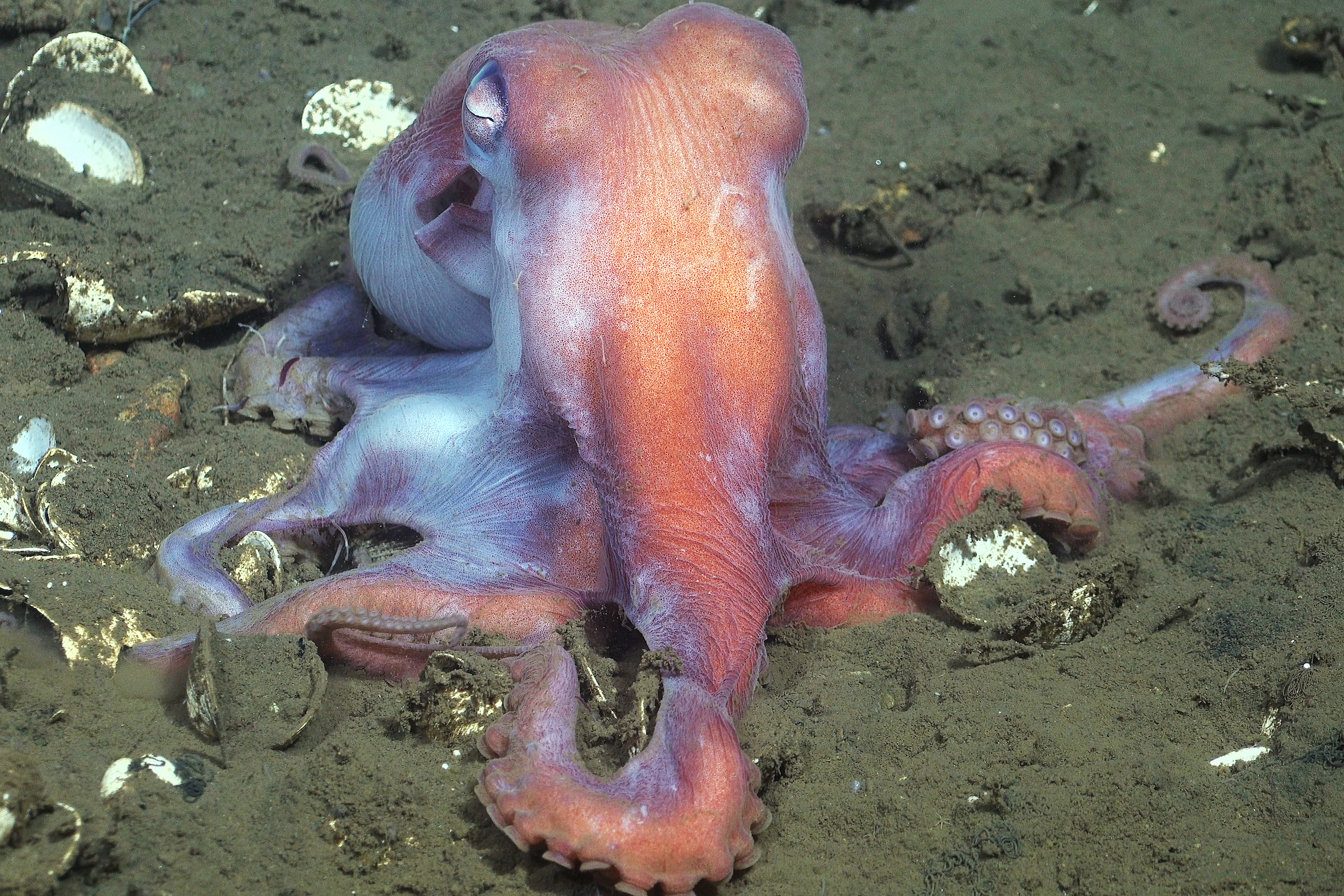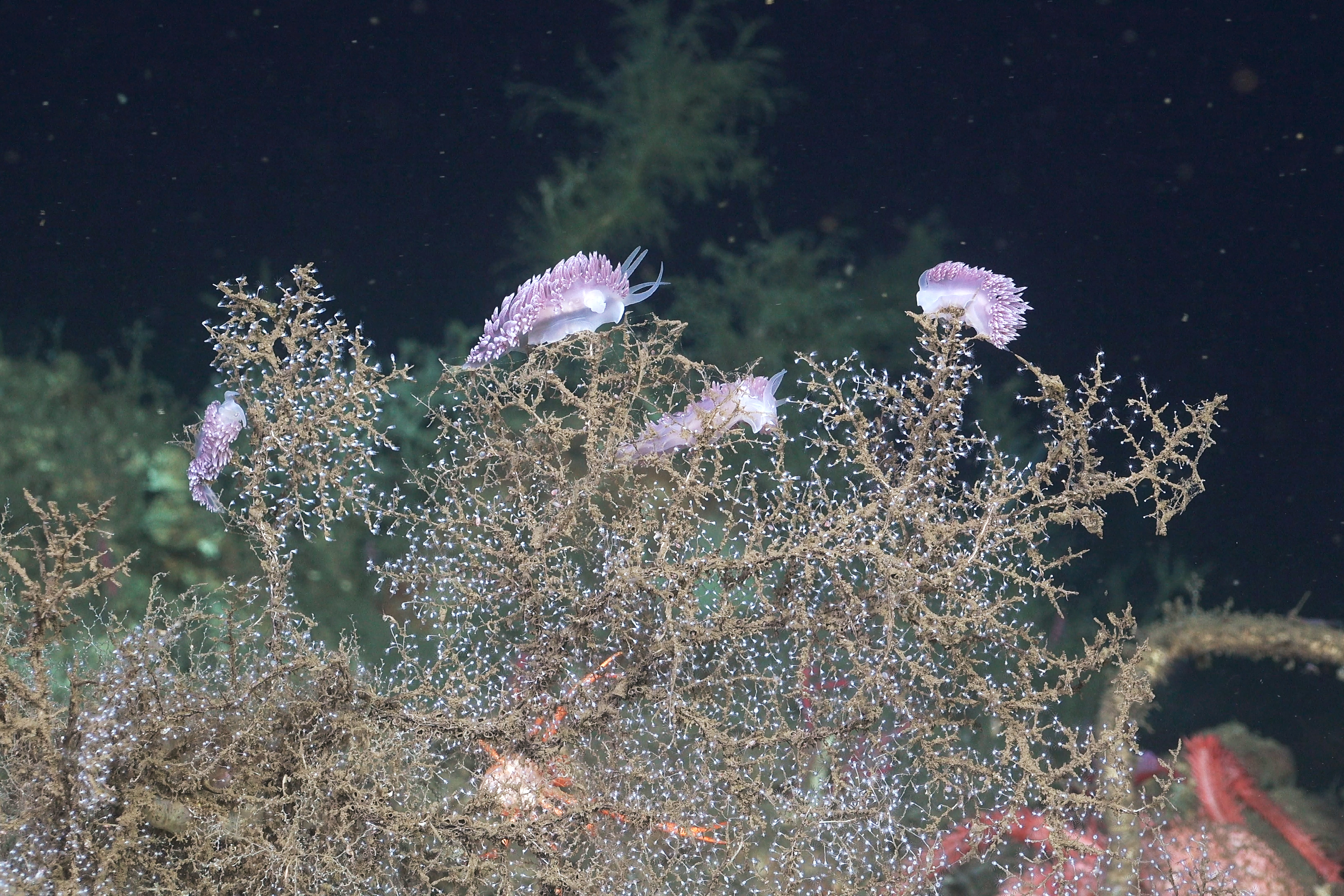Dazzling octopuses, creepy deep-sea anglerfish, cusk eels, and crustaceans are just some of the deep-sea creatures that have been documented by a recent expedition off the Chilean coast. Dozens of these otherworldly creatures may be entirely new to science, never before documented by humans.
ADVERTISEMENT
The images and video come from an expedition by the Schmidt Ocean Institute R/V Falkor (too) in December 2024. With the help of their remotely operated vehicle, or ROV, the team explored four uncharted underwater canyons and nearly 20 methane seep ecosystems in the Pacific off the coast of southern Chile.
The most expansive of these canyons spans around 2,000 square kilometers (772 square miles), while the deepest plunges over 3,000 meters (9,843 feet) beneath the ocean’s surface. These canyons function as essential ecosystems, providing surfaces for habitat-forming creatures like glass sponges and deep-sea corals, which in turn sustain a diverse range of species, from minuscule bristle stars to octopuses.

An octopus spotted on Dive 739 near Concepción Seep off the coast of Chile.
Methane seeps also make fertile grounds for animal life. Methane-rich fluids and gas bubble out of cracks in the seafloor and provide the “food” for bacteria that perform chemosynthesis, utilizing chemical energy from methane rather than relying on the Sun’s energy through photosynthesis. In the depths of the ocean, where sunlight is scarce, these remarkable bacteria form the foundation of entire ecosystems, sustaining an extraordinary and often unique diversity of life.
“I was most impressed by how different the methane seeps in this area are from those we’ve studied in North America — and how distinct the sites we visited were from one day to the next. The fact that we came across so many seeps in such a relatively small area suggests that they’re pervasive along the Chilean coast, serving as hubs for biodiversity and elemental cycling on a vast scale,” Dr Jeffrey Marlow, a microbial ecologist at Boston University and chief scientist of the expedition, said in a statement.

Nudibranchs, a group of soft-bodied marine gastropod mollusks, climb branches of coral.

A deep-sea anglerfish seen during the underwater exploration of a canyon system located off the coast of Chile.
The researchers outlined a couple of highlights from their recent expedition along the coast of Chile. For one, they found an abundance of red cusk-eels called congrio colorado (Genypterus chilensus) living around an 892-square-meter (9,601-square-foot) tubeworm mound near a methane seep. This species is a key ingredient in an eel chowder dish called Caldillo de Congrio, which is celebrated in Chilean culture.
Additionally, the team discovered a huge gathering of Humboldt squid feeding near the seeps, as well as a polychaete worm that shimmered like a living disco ball.
ADVERTISEMENT
Another exciting addition was the dozens of species that the team believes have never been documented by scientists before, offering a glimpse into the vast and largely uncharted biodiversity of the deep sea.
“These exploratory expeditions are incredible — and essential — opportunities for the science community to improve our understanding of the planet. After extensive sampling, we suspect our team has found at least 60 species new to science and will be working over the next few years to confirm this,” explained Dr Patricia Esquete of the University of Aveiro, Portugal.
Source Link: Deep Beneath The Pacific, Dozens Of Rare And Never-Seen-Before Species Have Been Discovered